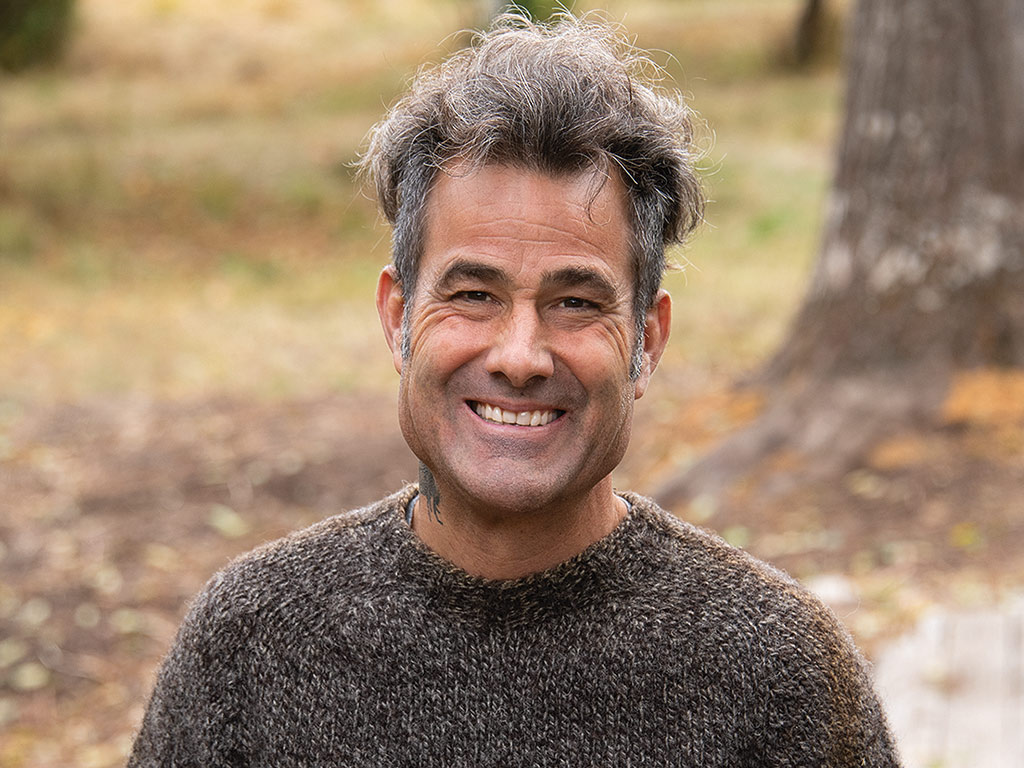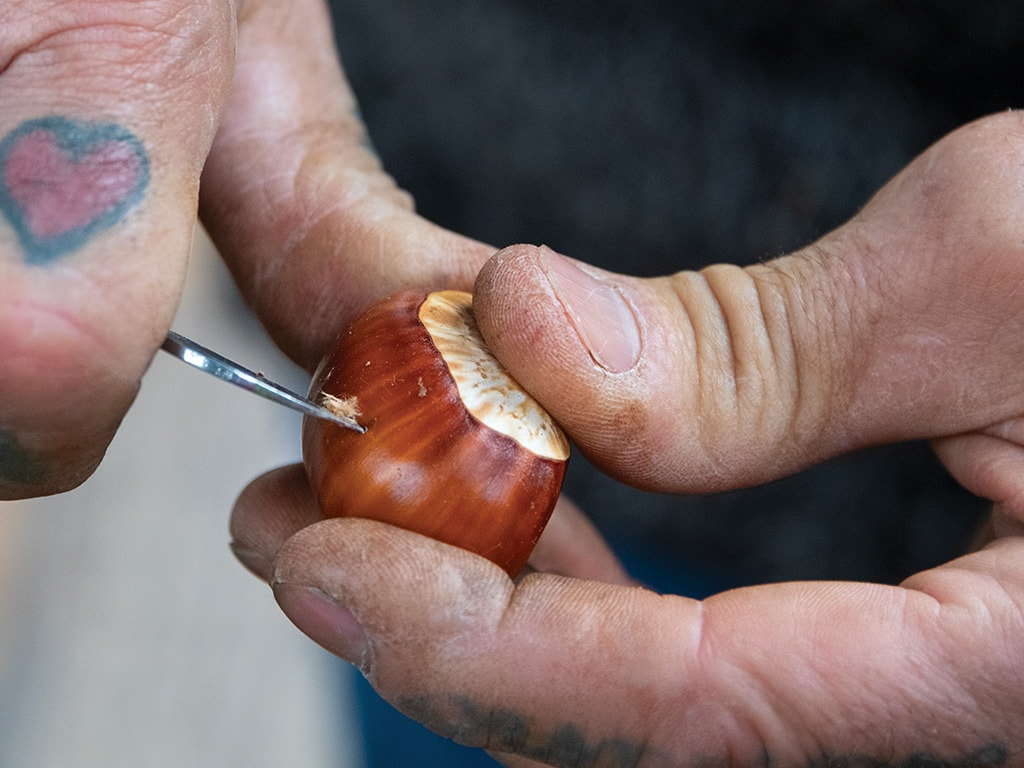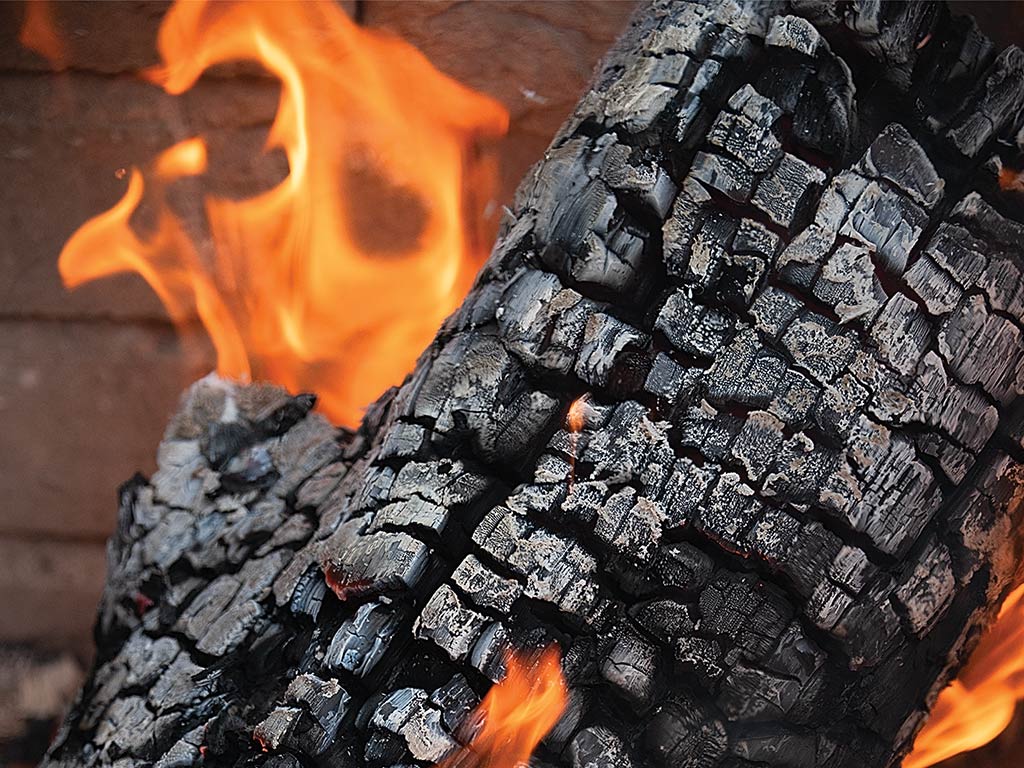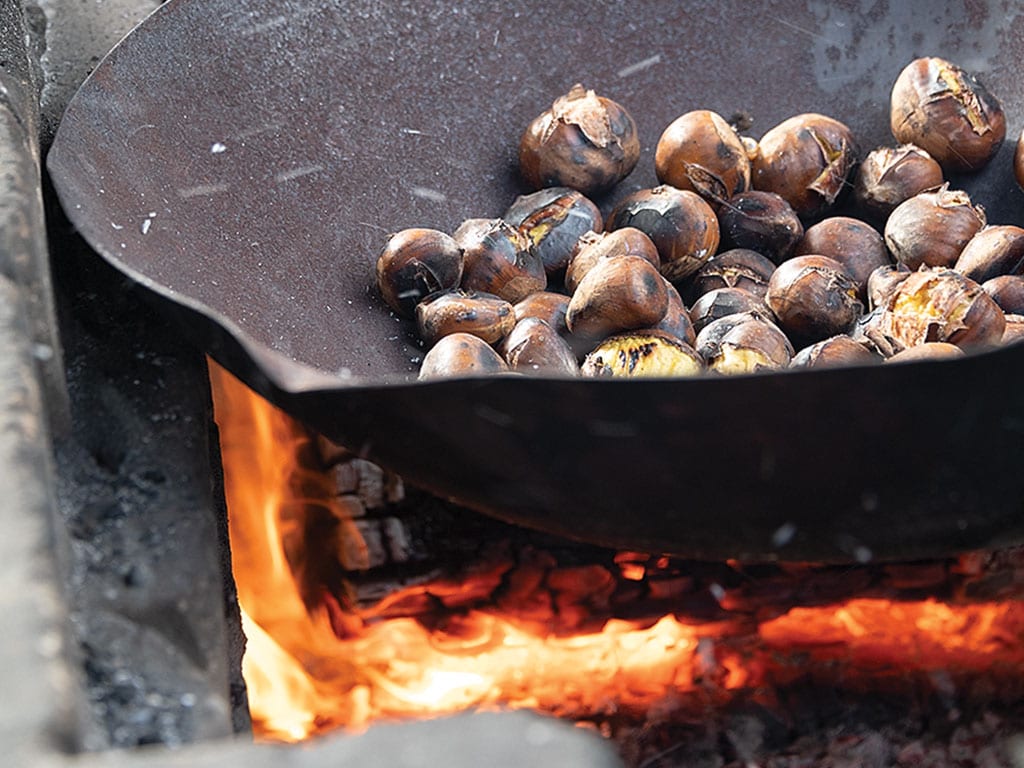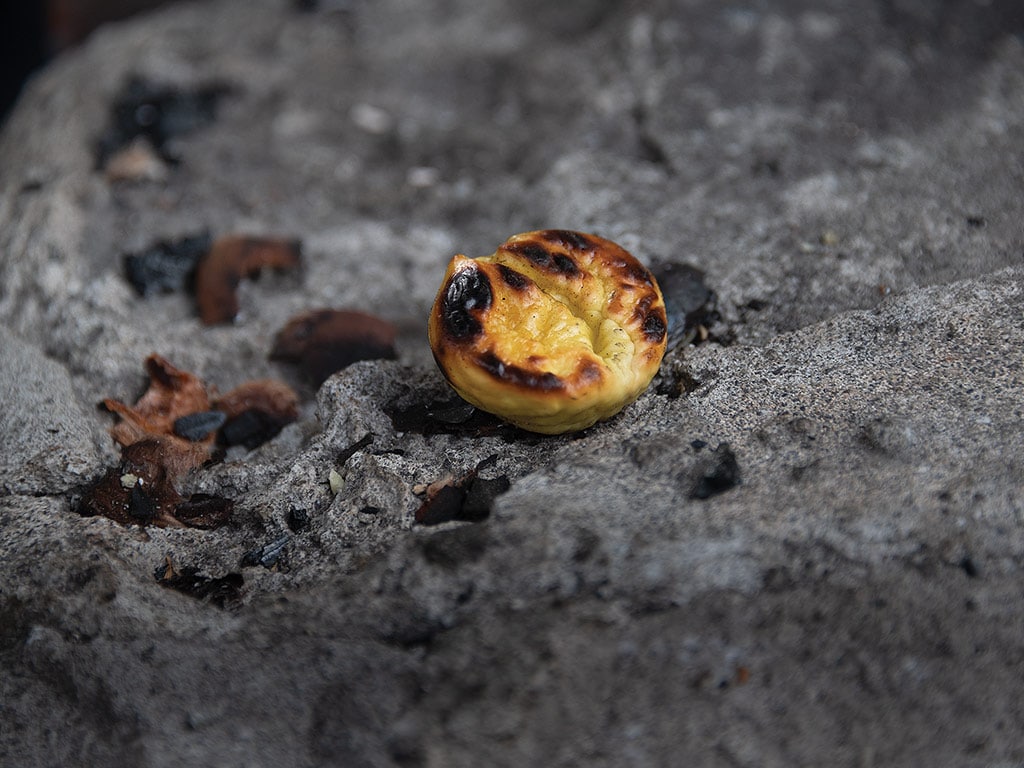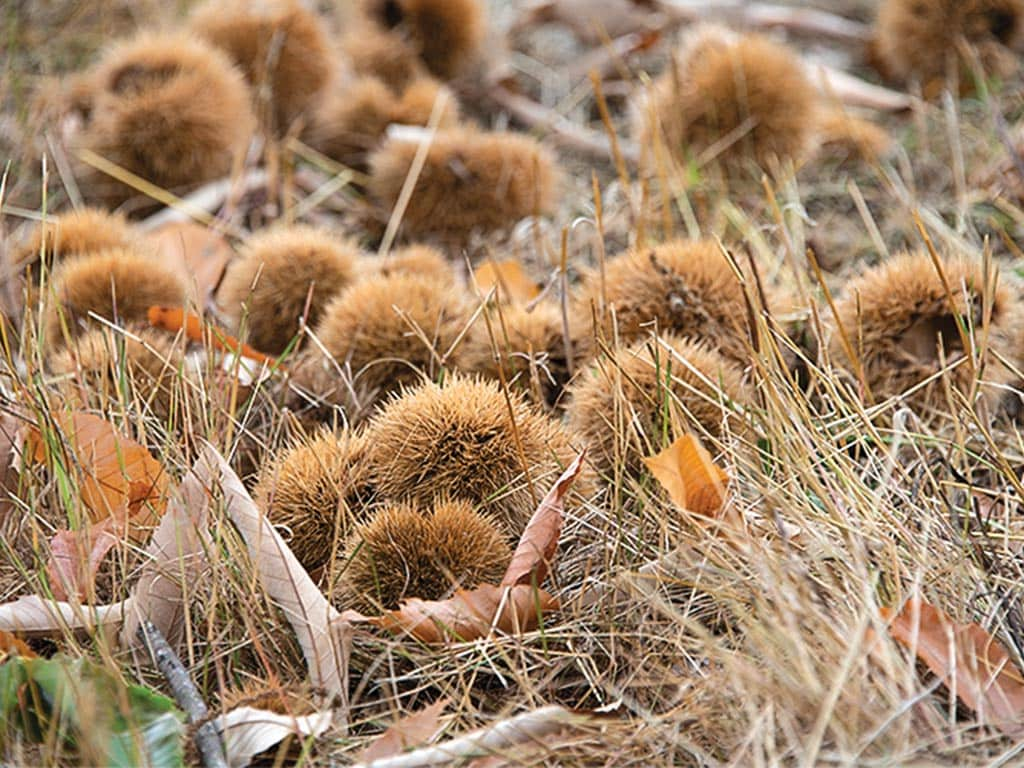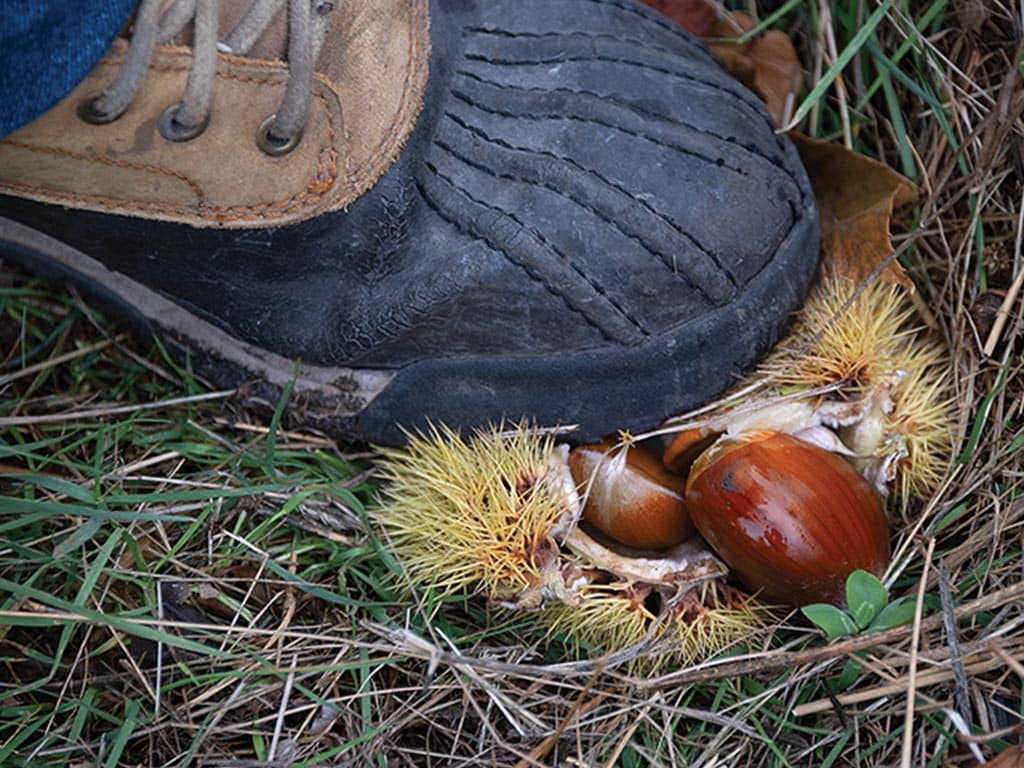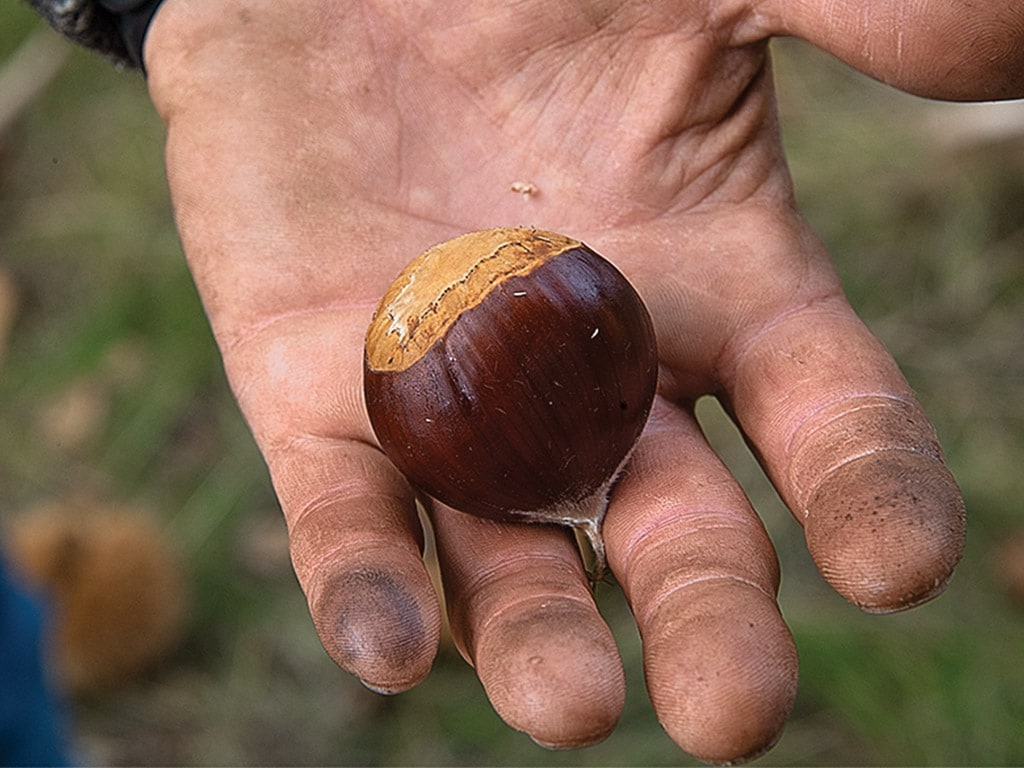Agriculture, Specialty/Niche December 01, 2023
That New Chestnut
.
Bringing back the taste of Christmas.
On a crisp autumn afternoon, when the toast of wood smoke and sweet smell of roasting nuts hits your nose, it's hard not to think of that old chestnut, Nat King Cole singing about chestnuts roasting over an open fire.
On a ridge above Hood River, Oregon, Bernardo Nella stokes a fire and pushes chestnuts around a red-hot iron pan. Nella Chestnut Farm is home to five acres of towering chestnut trees, a beacon to harvest-time visitors like Anna Downing and Andrew Callahan of Portland. The couple drove an hour for the chance to gather chestnuts, rolling the spiny burrs under their boots to free the brown nuts inside, scoring each hull with a sharp knife, and handing them over to Nella to roast.
For the couple, the trip has become an autumn pilgrimage.
"At a certain point in life, you've kind of plateaued in terms of experiencing new flavors, but the first time we ever truly had a fresh, roasted chestnut, I will never forget it," recalls Downing. "It was like, 'oh my gosh, I have never experienced anything like this.' It was starchy and sweet and hot and nutty. It was amazing.
"And we love it, too, because it doesn't take any adornment or seasoning or fats," she adds. "It's perfect as it is."
As he stirs the nuts, Nella shares insights on cooking and storage.
"If you don't burn the shell a little bit, they become very hard to peel," Nella explains. "You could do this at home in a pan, or even right on your stove. But what you want to do is cook them and, at the end, burn the shell a little bit."
Roasted nuts freeze OK, Nella advises. He stores uncooked ones in their shells for months in buckets of sand with a few air holes drilled in the tops and bottoms.
Above. Bernardo Nella teaches guests at his farm how to roast the chestnuts they harvest. Every nut must be scored with a sharp knife; Nella likes to carve an "X." Roasting takes about 15 to 20 minutes, with a bit of stirring. A little burn on a perfectly roasted chestnut adds flavor and makes peeling easier. Wood smoke tops off the roasting experience, though chestnuts can also be roasted on a stovetop, Nella says.
Rare treat. To Downing and Callahan—and most of us—fresh chestnuts are a rare treat. But for generations, the hearty nuts were the foundation of the Eastern food chain, raining down to feed wildlife and people from Maine to Mississippi. Chestnuts were a diet staple, especially in Appalachia.
The American chestnut, Castanea dentata, was the dominant hardwood in a forest that stretched from Maine to Mississippi. Its rot-resistant logs were used to build settlers' cabins and traders' boats, split for fenceposts and shingles, and milled for furniture. U.S. Forest Service plant pathologist George Hepting noted that most Easterners' cradles were likely made of chestnut, and their caskets were, too.
But in 1904, workers at New York City's Bronx Zoo noticed cankers bursting the bark of the park's chestnut trees. Cryphonectria parasitica—probably introduced to the U.S. on nursery stock—was a minor pathogen in its native China, but America's chestnuts had no resistance to the fungus.
Soon named chestnut blight, the disease spread 50 miles a year, girdling trees of every size. By the time Nat King Cole recorded the famous homage to roasting chestnuts in 1946, nearly every mature American chestnut was dead—about 4 billion trees.
Farms. In the wake of that devastation, chestnuts still drop in the autumn across North America on farms like Nella's.
Some farmers produce American chestnuts or native chinkapins, particularly in the West, where chestnut blight does not thrive. Others grow hybrids of blight-resistant Chinese C. mollisma and American or European species, or purebred varieties from China, Japan, or Europe.
Nella purchased his orchard in 2008. Every harvest is a surprise, with nuts ranging from small to massive, creamy to yellow.
Originally from Ontario, Canada, Nella was drawn to Hood River for its world-class kite-boarding. The farm captured his heart, and he has spent years cleaning up the property, creating hangout spaces for chestnut fans, and roasting nuts for visitors.
Every aspect is a treat.
"What makes me happy?" he asks. "Anything to do with trees. Planting them, trimming them, irrigating, then stacking the wood, burning the wood. I just love working with trees."
Nella also says chestnuts stir his Italian heritage. In Italy, as in most of Europe, as well as China and Japan, chestnuts are a staple from appetizers to main dishes to dessert. His goal is to learn to make marron glacé, French-style candied chestnuts.
"Every chestnut, from the moment it gets pollinated, dreams of becoming a marron glacé," he says.
Above. Ripe chestnuts fall to the orchard floor. Burrs are formidable, so experienced harvesters often use their feet to free the nuts. Chestnuts are prized around the world, and can be roasted, braised, made into paste, or candied.
Revival. Chestnut fans dream of a revival of the great American tree. The American Chestnut Foundation sponsors botany expeditions into Appalachian woods in search of resistant trees, and breeds and sells hybrid seeds. The foundation is also encouraging federal approval of Darling 58, an American chestnut modified with a gene from wheat that detoxifies chestnut blight's wood-killing oxalate.
As botanists, genetic engineers, and supporters work toward the return of the cornerstone of the Eastern forest, the aroma of roasting chestnuts remains an experience worth seeking. ‡
Read More
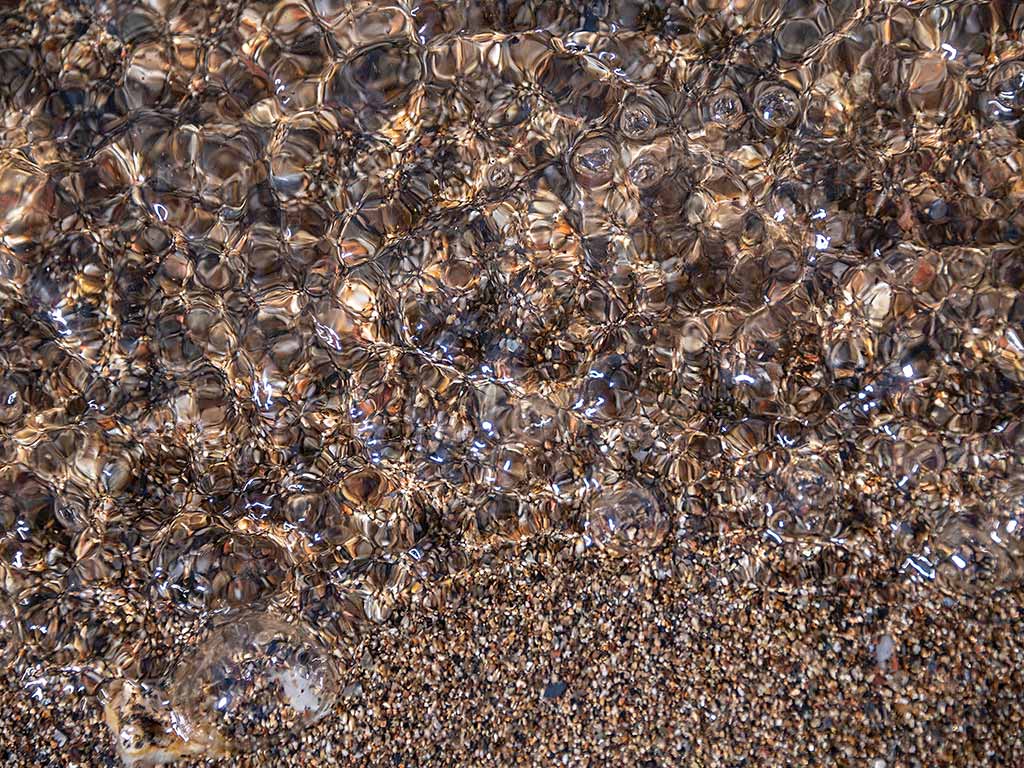
AGRICULTURE, EDUCATION
Golden Opportunity
The Gold Rush launched California's modern agriculture industry.

RURAL LIVING, SPECIALTY/NICHE
A Long, Long Shot
The movie Quigley Down Under inspired a Montana rancher to start his own long-range shoot.


